Wednesday Jan 07, 2026
Wednesday Jan 07, 2026
Tuesday, 19 April 2022 01:09 - - {{hitsCtrl.values.hits}}
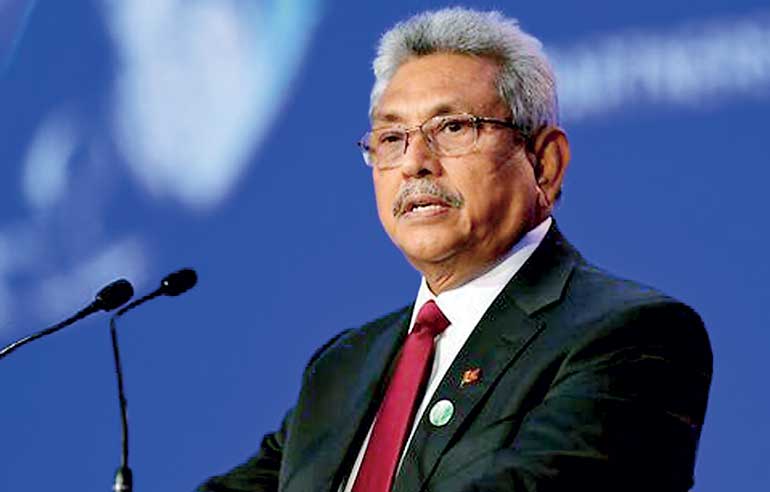
President Gotabaya Rajapaksa
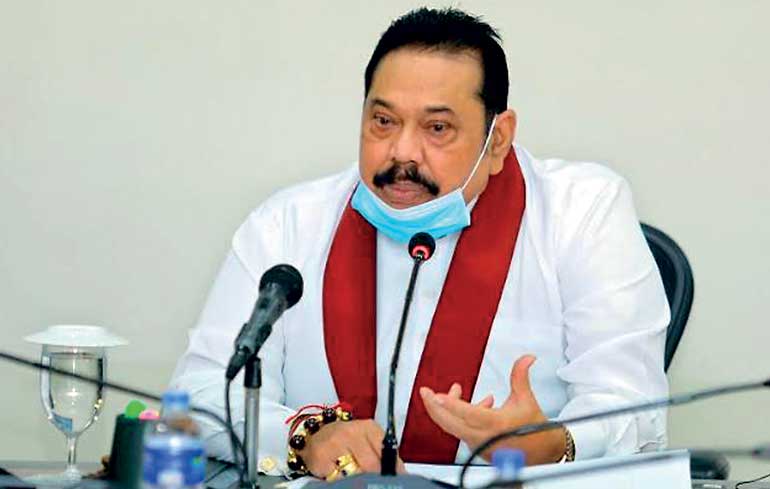
Prime Minister Mahinda Rajapaksa
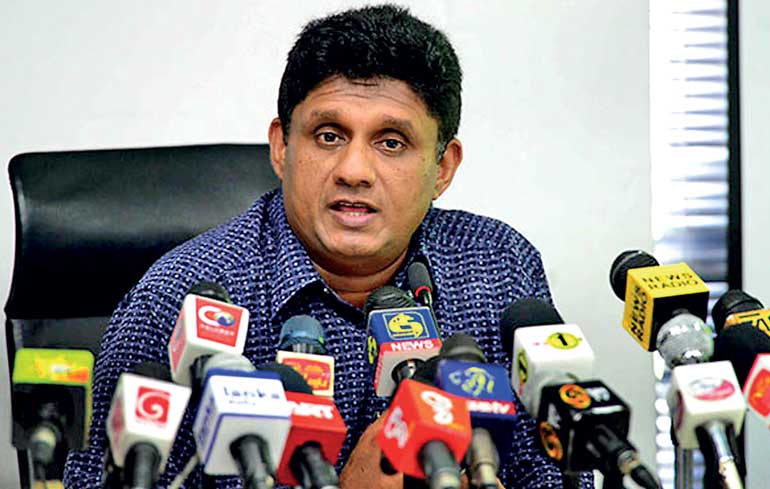
SJB Leader Sajith Premadasa
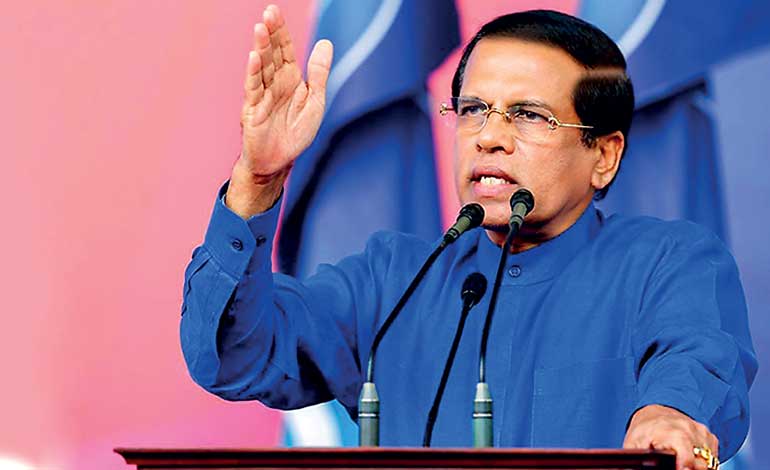
Former President Maithripala Sirisena
Demands being made for President Gotabaya Rajapaksa to resign are many and vociferous. Those who are making these demands should however consider some factors. 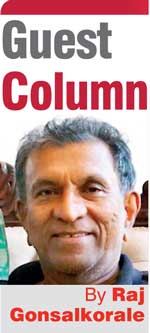
Firstly, the constitutional position. As far as the writer is aware, should the President resign, the Prime Minister acts for the President for a period of three months within which time the Parliament elects the next President to serve out the resigned President’s term till the next Presidential election. It is unclear whether the current Prime Minister, who has held the office of President twice, could act in this position as per the Constitution which limits the term of the President to two terms. If he is barred constitutionally from acting as the President, then the Speaker of Parliament acts as President until the Parliament elects the next President. This constitutional position has to be checked by legal experts. In any event, whoever acts as President will do so until Parliament elects the next President.
Secondly, one then needs to consider possible contenders. Maithripala Sirisena and Sajith Premadasa would most likely be the front runners. Those demanding President Rajapaksa to resign should consider whether one or the other is acceptable to them to be the next President. It is unlikely that either of them will have a majority in Parliament to get elected and therefore they will have to garner that majority by seeking support from others. This article doesn’t intend doing any in depth analysis of the pros and cons of these two possible contenders. Their history and competence levels are surely known.
One factor that defines Sirisena is that he has been a believer of the adage that “your enemy is my enemy, therefore we are friends”. His teaming up with Ranil Wickremesinghe in 2015 by ditching Mahinda Rajapaksa, and then ditching Wickremesinghe to join Rajapaksa again in 2019, and now ditching them again seems to illustrate his character. Sajith Premadasa is an unknown quantity when it comes to holding high office although he was a senior minister in the Wickremesinghe Government of 2015-2019.
At the very outset it needs to be stated and made clear to readers that the phenomenon of spontaneous peoples’ protests has been unprecedented and very welcome. It is an evolution of the country’s democracy. People’s participation in governance has to continue if one is to arrest corruption, inefficiencies and waste. It needed to start the process to weed out undesirables from entering Parliament. Democracy is not only about casting a vote every so many years but influencing decision-making based on policies and promises, and the character of individuals. In the current political impasse, it is worth examining the ongoing purpose and role of these spontaneous protests and perhaps what they should consider as priorities towards achieving what could be done to give a new lease of life for an economy that has almost died. The protestors have achieved a couple of key results. They have got a cabinet to resign. They have clipped the wings of unabated power exercised by Presidents and Prime Ministers of the country. They have given a firm thumbs down to family and dynasty politics. They have raised accountability to the top of governance priorities. They have brought people closer to chartering the outcomes needed from those in power on their behalf.
It is unlikely Sri Lanka will be the same hereafter. These are significant democratic achievements over a very short period of time.
The protestors however need to consider some crucial factors now. President Gotabaya Rajapaksa has finally reached out to the IMF seeking their support for debt restructuring, and support for debt relief. He has appointed a panel of high-quality advisers to assist in negotiations on behalf of the Government. The measures that the Sri Lankan Government will have to take to get IMF support will be stringent and even harsh. Implementing these measures could lead to even greater dissatisfaction.
This situation will not be different should another political combine takes over the Presidency and the Government. The situation is going to be worse before it gets better as the new Central Bank Governor himself has stated. One can foresee placards currently being held by protestors saying “Gota Go Home” changing to “IMF Go Home” as a consequence. Besides the spontaneous people’s protests, the politically organised opportunistic protests will also raise their tempo and they could even end up in violence.
In this climate, political stability is crucially needed to revive the economy and measures to be taken to prevent a recurrence of a situation being experienced now. When a patient is dying or gasping for breath, there is no point in asking questions that has no link to the condition of the patient. The patient has to be rushed to hospital and ICU care.
Sri Lanka is presently that patient. The need is to rush the patient to the ICU. For the Sri Lankan economy, the ICU is the IMF.
How this patient came to this situation has to be found out, but not now. Once the patient shows signs of recovery, it would be very opportune to enquire how the health of the patient deteriorated and what and who were responsible. Now is not the time to do it.
In addition to the IMF, specialist physicians are also needed to treat the patient who is sick economically, and the equivalent of specialists would be countries like India, China, Japan, South Korea, Middle Eastern countries, the EU, USA, etc. who could and should be canvassed for immediate bridging finance to meet foreign exchange requirements for essential imports at least for the next six months until relief from the IMF takes hold.
In the context of the inevitability of seeking an IMF bailout package now and the price Sri Lanka will have to pay for decades of poor economic management, the need for a political compromise to provide a degree of political stability has to be considered as a given prerequisite.
The protestors have achieved a significant political victory in forcing the cabinet to resign. They have indirectly achieved what would have been impossible some months ago, and that is the seeking of IMF assistance and the appointment of the earlier mentioned expert panel to advise the Government. These measures, at least at this stage, have divorced politics from economic management. The latest announcement that the entire debt repayment is to be temporarily halted until the IMF-led debt restructuring program has been done is an indication of the trajectory of economic management free from politics. However, how long this distancing will last will depend on the attitude and tactics of political parties and the tactics of spontaneous protests. Sri Lanka is now in the ICU and the activities of these two groups could pull the lifesaving medicine being administered to the patient, resulting in the demise of the patient. Party politics therefore has to take a backseat at least for the next 24 months.
However, this will not happen unless the President follows through with the steps he has taken to get the economy reviving and he demonstrates he is freeing himself from party politics to do this. His political party too has to take a backseat along with all other political parties if there is to be some political stability.
However, considering the mistrust people have of the President and the Government, his political future and that of his party is in serious doubt. His current challenge and priority should be to do what he should have done at least 12 months ago and get the country out of the mess it is now. The worldwide impact of COVID was known then, and its ongoing impact on the Sri Lankan economy was also known. While his advisers failed him, as President, he has to take the responsibility for the debacle as the buck stops with him.
Now, he has a few options to formulate a strategy that would permit the implementation of the potential IMF bailout package with an arm’s length involvement of the Executive Presidency in economic policy development, and implementation, including debt restructuring and management. This could be part of an interim arrangement for 24 months.
The following political options are suggested:
1.Replace the Prime Minister with a technocrat of proven ability drawn from outside Parliament and brought into Parliament as a national MP to guide the economic revival.
2.Bring in Sri Lankan technocrats from within or outside of Sri Lanka into the Parliament as National List MPs and appoint them as cabinet ministers to key portfolios like Finance, Economic Development, Justice, Foreign Affairs, Investment Promotion and State Enterprise Reform.
3.Extend an invitation again to other political parties to join a multiparty cabinet for 24 months with not more than 10 ministers in addition to the portfolios mentioned above and focus only on portfolios such as Health, Education, Power and Energy, Agriculture and Water Resources, Industries, Tourism, Infrastructure Development and the Environment.
4.Suspend all State Ministers for 24 months and reassign key tasks of State Ministries to Secretaries of the State ministries.
5.Hold a presidential and general election soon after the interim period of 24 months.
The President and the Government have to take action that will restore even a modicum of trust and confidence in them amongst the people. Life is not normal, and one cannot pretend it is. The Opposition parties and dissidents from within however is not the answer the public wants as they do not have trust in them either. Their protests and the discord it will create will only exacerbate and advance the crash landing of Sri Lanka. So, for the sake of the country and its future, one hopes that a compromise is reached amongst political parties using a basis as suggested above.